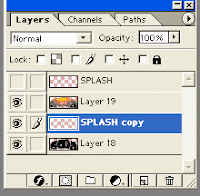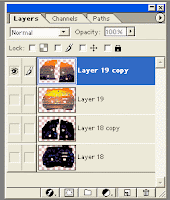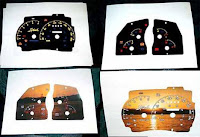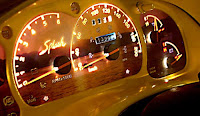
Engine Tuning an overview.
Engine tuning depends largely on the base engine size and to a large degree depends on the amount of tuning done at the factory. The larger the engine the larger the gains will be. Each type of engine have different characteristics for example the Honda VTEC is very high revving wheras a large v8 lump provides power in a very lazy manner at low revs, adding turbos or superchargers further alter the characteristics of the engine and some modifications will actually cause a loss of power if applied to the wrong engine typre. Here is a very very brief overview of engine tuning strategies for the various types of engines out there. Please join us in the Chat forum for detailed questions and tuning tips for your specific car type.
Smaller engines under 1.4l
These are relatively solid and can withstand a fairly good redline usually higher than some of the larger capacity engines. As these engines do not produce much power there is not much of a gain to be had from them. Adding an induction kit and exhaust will make the car harder to live with. A fast road cam that exploits the high revving nature of these engines is probably the best thing you can do. It is also worth increasing the fuel by getting larger injectors. (Often models in the same range with larger engines have compatible injectors so see if the injectors from the 1600cc will fit your 1300cc engine.)
Mid size engines
1.4-1.8l This is actually a very wide band of engine types and sizes. The base upon which to build is greater so there is more of a reward from tuning them. I would recommend a sports exhaust particularly on the higher revving Japanese engines. I would still hesitate to add an induction kit but a panel filter which is a direct replacement for the standard paper air filter is a good compromise. Towards the upper engine sizes of this range you will start to see gains from the addition of forced air induction either a turbo or supercharger. Because you are adding pressure with forced air induction you should seek to reduce the compression ratio of the engine and run at a relatively low boost level. Addition of Nitrous Oxide injection can also yield some silly power gains. Fast road cams will have a good effect too but not in isolation - to free up the power generated by the cam you will need the sports exhaust and a better flowing air filter.
Larger Engines
2.0 upwards including V6 V8 etc.
These are the big daddies. The tend to provide much more low down torque than the smaller engines and all have good tuning potential. Inductions kits generally work quite well as do sports exhausts of 2.5-3inches in bore diameter. The larger the engine the more you have to gain by adding a sport computer or reprogrammed ecu. Due to the nature of these big engines I would not recommend a turbo application due to the internal engine modifications that would need to be applied, but mild supercharging is still beneficial. CAMS would also have a good impact on the performance of these engines, especially the silky smooth V blocks, but as the gains are much bigger than with the smaller engines fuel uprating becomes vital or you run the problems of running too lean. Temperature control is vital as the larger cylinders produce and hold a lot of heat. Ensure your cooling system is up to spec and use water wetter to raise the boiling point of the coolant. Overheating can be a major cause of engine failure.
Diesel Engines
Diesel engines run differently to petrol engines in that the compression within the cylinder causes the fuel and air to burn as the pressure increases. The big problem with diesel engines is that they have very high compression ratio's and the fuel does not burn as quickly as petrol engines so typically the engines have much lower redlines. This is why many performance diesels come with a 6 speed gearbox with low ratios to cope with the relatively short power band. Manufacturers have experimented with prewarming the diesel before it goes into the engine and various methods of direct injection so it is actually quite hard to give general tuning advice. With nearly all Turbo Diesel engines there are quite silly power gains to be had with a remapped ECU - or the addition of a piggy back ecu which takes over much of the timing calculations. 'Chipped' diesels are still very economical and users have reported that they are much more free revving and easier to live with. Servicing is vital though to keep the engine running at peak efficiency as a chipped engine is quite unforgiving.
Turbo Engines
The largest power gains to be had are on vehicles equipped with a turbo. A straight remap of the ECU yields a lot of extra power sometimes as much as another 25-30%. Turbo engines have to cope with a lot of stress so most leave the factory in a very strong state. Uprating the turbo with either a larger turbo or twin turbo set up can help improve power even further but with this route all other aspects of tuning should be explored to release the full power available (Sports exhaust including flowed down pipe, induction kit with a cold air feed, larger valves and flowed head, bigger injectors and a larger more powerful fuel pump, strengthened bottom end of the engine if you are increasing the power by more than 50% of its standard spec).
It is worth remembering that whenever you increase the amount of fuel you need to balance this with air. The ratio must be fastidiously maintained otherwise the car will run rich if there is too much fuel or lean if there is too much air. Most engines a self adjusting but attention must be given to fuelling and air induction when pushing the tuning potential of the engine to it's limits.
 All cars respond well to weight reduction - please see the article on weight reduction for more detailed discussion of this releatively cheap method of increasing your cars performance.
All cars respond well to weight reduction - please see the article on weight reduction for more detailed discussion of this releatively cheap method of increasing your cars performance.Most modern engines have a complex engine timing and management computer and most can be retuned to a higher state of tune fairly easily but this is best done after other modifications are carried out. Piggyback computers offer adjustments where standard ecu programming is not available.




















